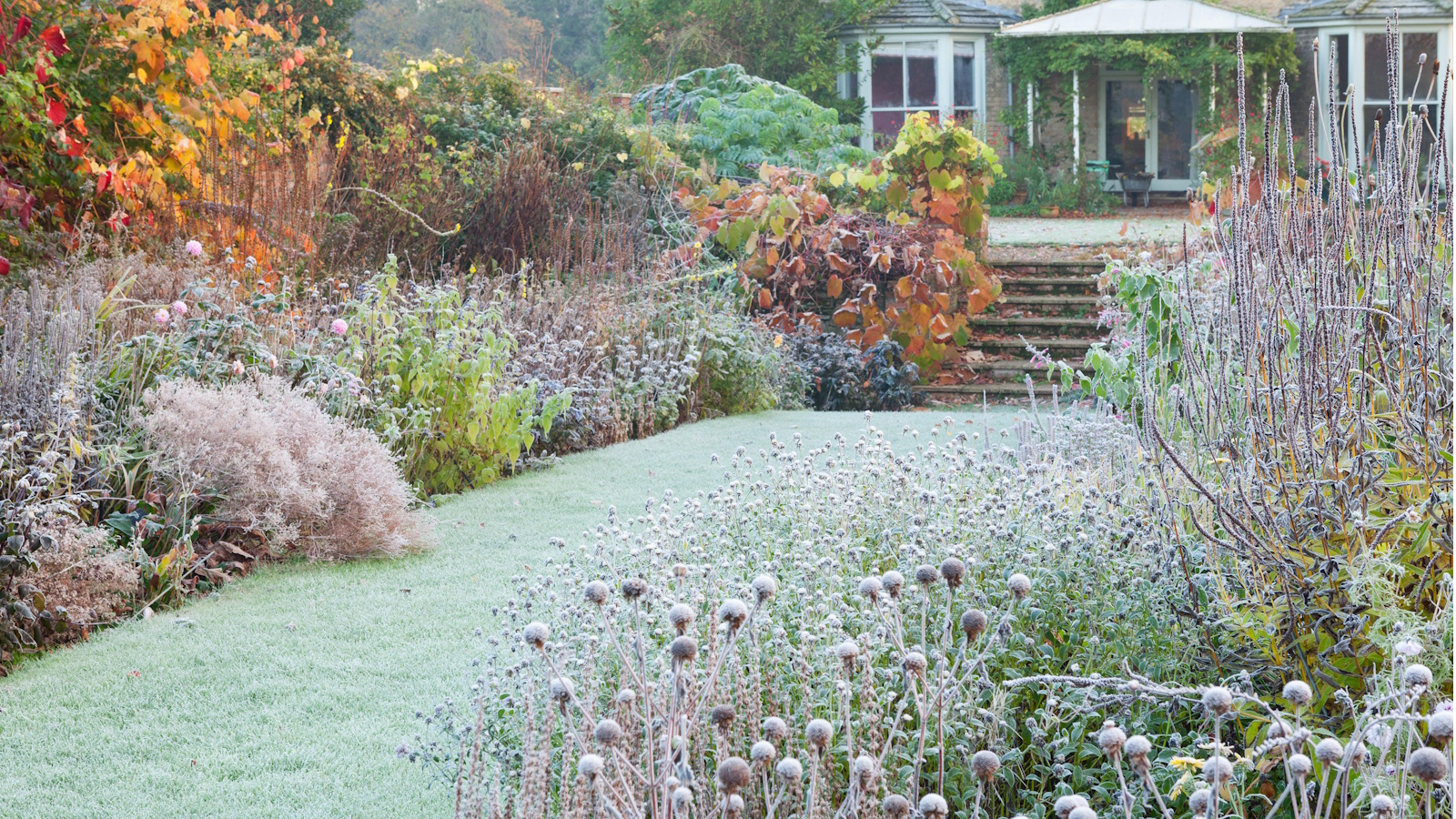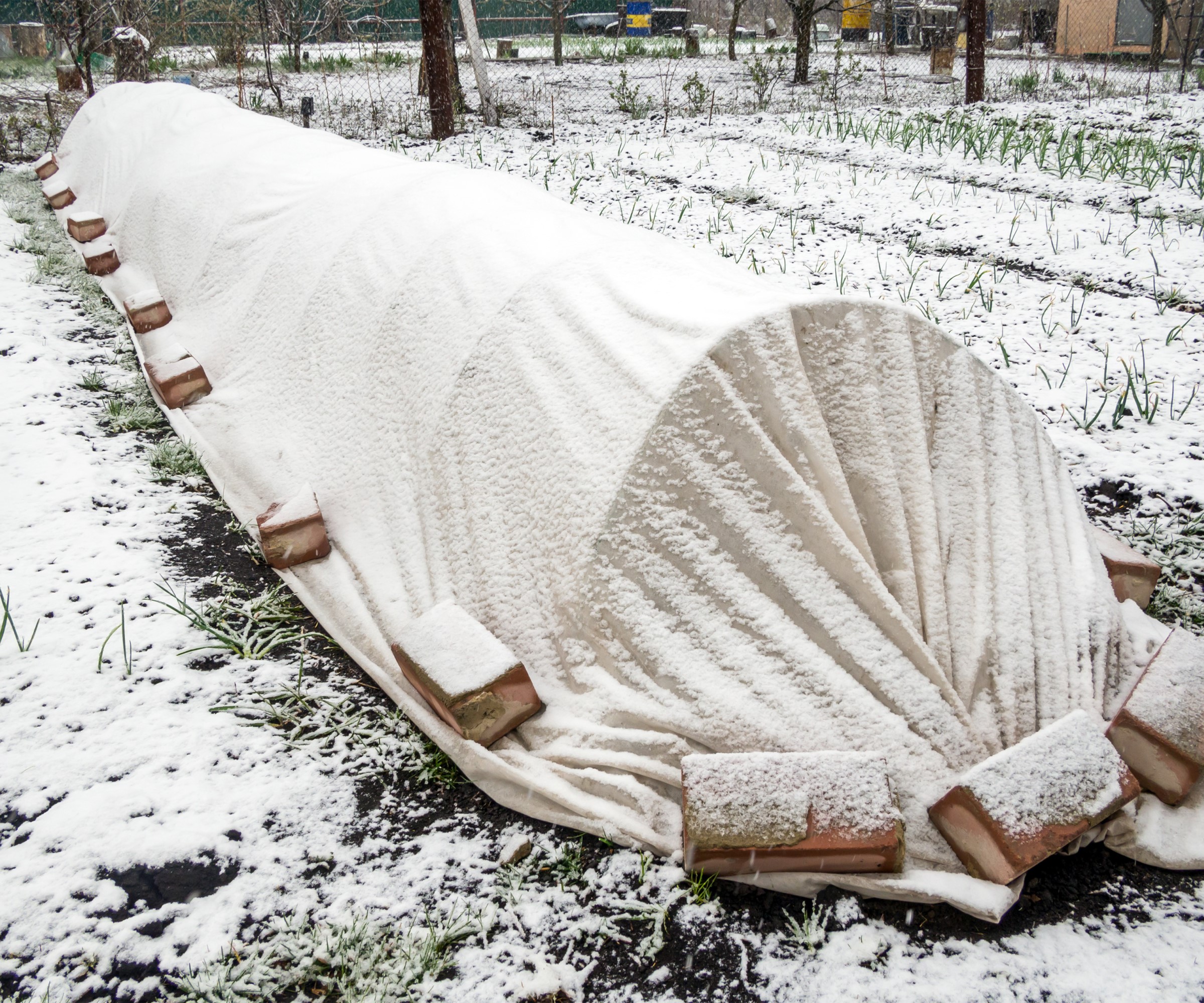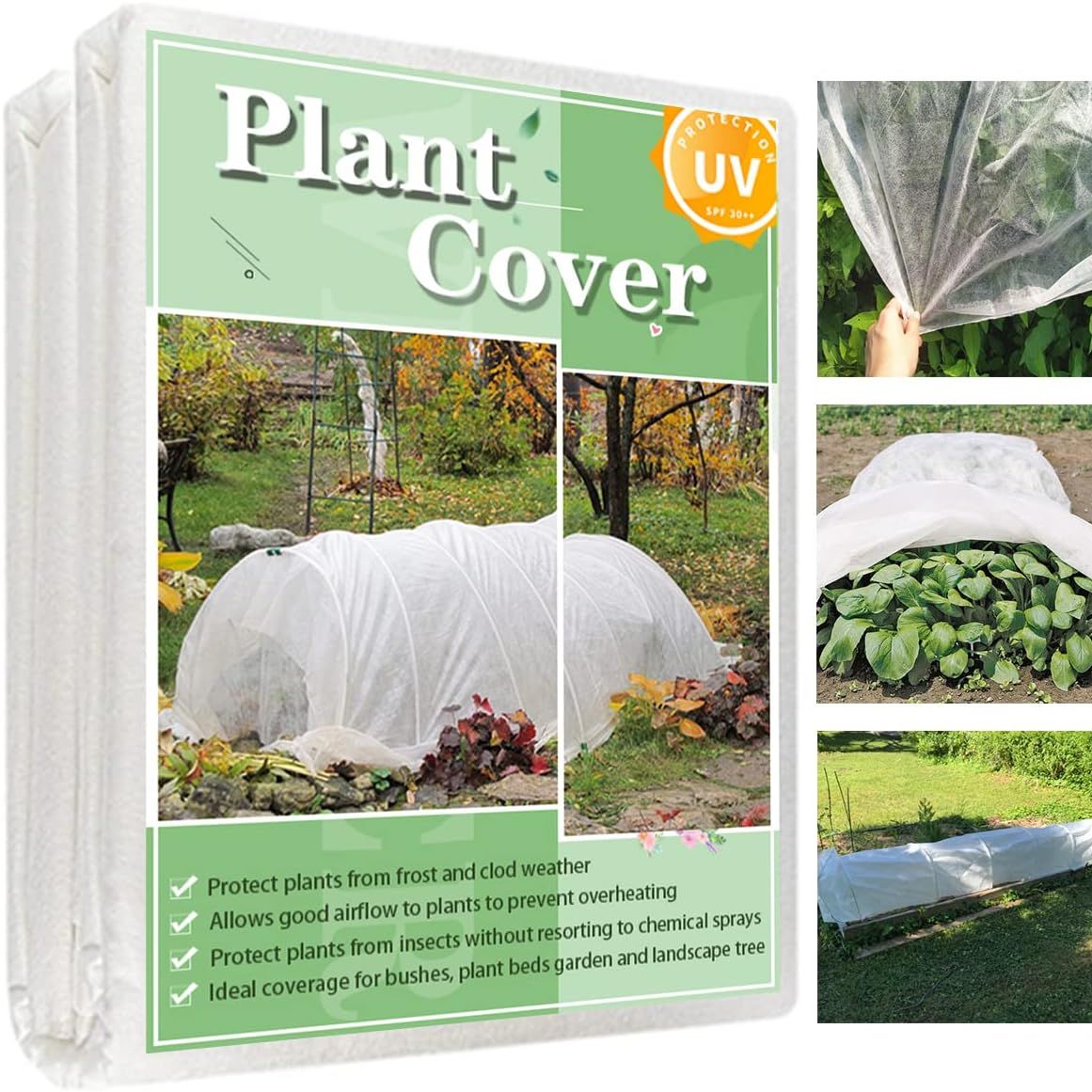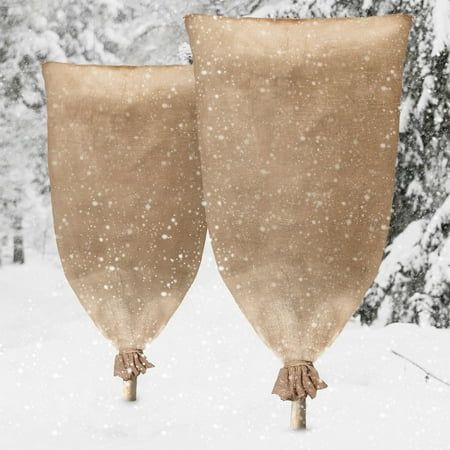Don't Cover Plants with Plastic to Protect Them From Frost – 6 Non-Toxic Alternatives that are Better for Your Yard
Plastic sheets do protect plants from frost, but they can also create issues for your yard


Frost is impending, so it's a crucial time to prepare your yard to get through the winter season unscathed. Frost covers are a great way to do this, acting as a blanket to insulate plants and protect plant roots from freezing. These come in all forms and are made from all materials, including plastic.
While it is possible to protect plants from frost with plastic, it isn't necessarily the most sustainable garden idea. There are plastic frost cover alternatives that will last much longer, offer more breathability, and ensure microplastics don't leach into your soil.
Here, I explore why plastic isn't the best material to use for frost protection, plus the very best plastic frost cover alternatives to shop instead.
Can you cover plants with plastic to protect plants from frost?

Just like using bed sheets to protect plants from frost, plastic can work effectively to create a protective frost barrier.
In fact, you can purchase plastic frost covers (like this from Amazon), which are designed to trap warmth and keep frost out.
However, this isn't necessarily the best thing to use to cover plants. This is because plastic isn't breathable, fostering an environment for moisture to build-up. This can lead to fungal issues and mold, harming the health of your plants.
Plus, plastic frost covers aren't a great option if you're looking to make non-toxic gardening swaps in your yard. Microplastics can leach into your soil, impacting soil health and structure, water retention, and plant health.
Design expertise in your inbox – from inspiring decorating ideas and beautiful celebrity homes to practical gardening advice and shopping round-ups.
Instead, breathable, non-toxic materials offer a more balanced environment for plants while still effectively protecting plants from frost. Plus, they're durable and are made to last for years to come.
6 plastic frost cover alternatives
To help you make greener choices while overwintering your garden, I've pulled together six of the best plastic frost cover alternatives to shop now:

These non-woven plant blankets are breathable, lightweight, and soft. Ideal for potted trees and shrubs, especially protecting fruit trees from frost where you aren't able to move them under shelter. The covers have a drawstring system to create a snug fit.

Mulching with organic materials is one of the most effective ways to insulate pant roots in winter. This pine needle mulch can be laid down at the base of plants to retain warmth and moisture. A bonus: as the pine needles decompose, they boost essential plant nutrients in the soil.

These floating row covers are made from non-woven fabric for breathability and light exposure. They're ideal for kitchen gardens and rows of crops that need winter protection. It measures 10x50ft.

A cold frame is a great plastic frost cover alternative, offering a sturdy, warm spot for plants to overwinter. It has a transparent roof to let light in, while keep plants warm and preventing them from being knocked over in the wind.
FAQs
Can I use plastic as a weed barrier in the yard?
While it is possible to use plastic sheets as a weed barrier, it isn't always the recommended option. This is because microplastics can leach into soil, and it isn't necessarily the most durable material to use. Instead, opt for eco alternatives. This includes organic materials like bark chip and mulch, or natural fabrics like burlap.
Opting for plastic frost cover alternatives will reward you not only with winter protection, but also long-lasting materials that can be reused each year.
If you're keen to make more eco-conscious choices in the garden, read our guide to zero waste gardening and using kitchen waste in the garden.

Tenielle is a Gardens Content Editor at Homes & Gardens. She holds a qualification in MA Magazine Journalism and has over six years of journalistic experience. Before coming to Homes & Gardens, Tenielle was in the editorial department at the Royal Horticultural Society and worked on The Garden magazine. As our in-house houseplant expert, Tenielle writes on a range of solutions to houseplant problems, as well as other 'how to' guides, inspiring garden projects, and the latest gardening news. When she isn't writing, Tenielle can be found propagating her ever-growing collection of indoor plants, helping others overcome common houseplant pests and diseases, volunteering at a local gardening club, and attending gardening workshops, like a composting masterclass.
You must confirm your public display name before commenting
Please logout and then login again, you will then be prompted to enter your display name.

